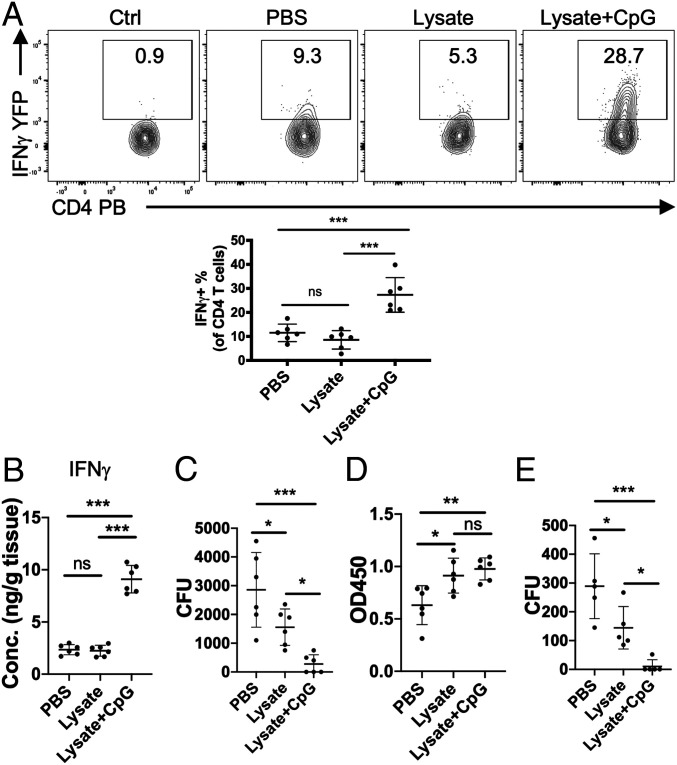Fig. 4.
Intravesical vaccination with bacterial lysate and CpG of repeatedly infected mice induced strong bladder Th1 responses that significantly improved bacterial clearance on bacterial challenge. (A) Naïve Great mice were intravesically infected by UPEC J96 three times, then vaccinated three times with PBS, UPEC J96 lysates alone, or UPEC J96 lysates with 10 μg of CpG. These immunized mice were then challenged once again with UPEC J96. Bladders were collected for flow cytometry analysis on day 3 postchallenge. WT C57BL/6J mice infected with UPEC J96 served as controls for YFP gating. (B) Naïve WT mice were intravesically infected with UPEC J96 three times, then vaccinated three times with PBS, UPEC J96 lysates alone, or UPEC J96 lysates with 10 μg of CpG. These mice were once again challenged with UPEC J96. The concentration of IFNγ in bladder lysates was measured on day 3 postchallenge by ELISA. (C) Naïve WT mice were intravesically infected with UPEC J96 three times, then vaccinated three times with PBS, UPEC J96 lysates alone, or UPEC J96 lysates with 10 μg of CpG. These mice were once again challenged with UPEC J96. Bladders were collected to determine bacterial load on day 3 postchallenge. (D) Serum from C was collected to determine the concentration of UPEC J96-specific IgG by ELISA. (E) Naïve WT mice were intravesically infected with UPEC J96 three times, then vaccinated three times with PBS, UPEC J96 lysates alone, or UPEC J96 lysates with 10 μg of CpG. These mice were once again challenged with UPEC J96. Bladders were collected to determine bacterial load on day 14 postchallenge. Each data point represents one mouse. Data are shown as mean ± SD. Data were analyzed by ordinary one-way ANOVA with Tukey’s multiple comparison post hoc test. *P < 0.05; **P < 0.01; ***P < 0.001. ns, not significant.

